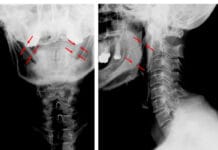Malpractice is defined as “a dereliction of professional duty or failure to exercise an ordinary degree of professional skill or learning by one rendering professional services which results in injury, loss, or damage.” Dental malpractice is a deviation from the standard of care, failure to diagnose and/or treat a patient resulting in injury to them.1
Dental hygienists are licensed professionals regulated by dental practice acts developed by a legislative body. State boards or licensing agencies also develop regulations in accordance with those statutes. Licensure is the strongest form of regulation, and these statutes are meant to define the scope of practice for dental hygienists. Knowing and understanding the rules and regulations specific to the state you practice is an essential first step to avoiding malpractice claims. Yet, even if a dental hygienist is named in a malpractice claim, liability falls to the dentist or employer, right? Not necessarily.
Malpractice insurance is meant to protect any assets if a patient decides to take legal action against you. The National Practitioner Data Bank recorded 32,488 malpractice claims against dentists, and 4,491 against dental hygienists and dental assistants between 2007-2017.2 The average settlement was estimated at $68,000 not including defense costs.3 Vicarious liability states that an employer assumes responsibility for their employee’s actions during their employment.3 This has led many dentists and dental hygienists to believe it is not necessary for dental hygienists to cover themselves. Though it is true that dentists are sued more often, there are several scenarios in which a dentist’s malpractice insurance may not help or completely cover a dental hygienist named in a malpractice claim.
Restrictions and Limitations
Malpractice liability insurance is not necessarily required depending on the state you practice in, only recommended, surprisingly even for a dentist. In a 2016 survey of state dental boards, at least 32 states responded they did not require malpractice insurance for dentists to practice in their state. Others may require it, but do not request proof of coverage for licensure or renewal. If a dentist does choose coverage, there are plans with a clause that will not cover a dental hygienist if the dentist is not named in the claim. Additional clauses may allow the insurance to cover the dental hygienist, but also allow the company to sue the dental hygienist later to recoup any settlement costs. Lastly, even the best liability insurance plans have monetary coverage limitations that may not extend the full amount of a settlement.1 This may leave the dental hygienist responsible for any excess court and defense fees outside the dentist’s plan coverage.
Types of Malpractice Coverage
There are two main types of malpractice insurance, claims-made, and occurrence. Coverage is either based on the date of the incident or the date the claim was initially filed.
Claims-made coverage is more common and generally less expensive.1 These plans must be active at the time of the malpractice claim and will not cover any claims made after the policy has been canceled even if coverage was active on the date of the event. In this case, tail-coverage may be a necessary purchase to protect you if you are sued after leaving practice or if your new policy is not retroactive.
Occurrence policies do not require tail-coverage because coverage is based on the date of the event. If this type of policy was in effect at the time treatment was rendered, coverage is guaranteed even if the policy period has ended.1 Because tail-coverage is not necessary for occurrence policies, they may be more affordable in the long run.
Top 5 Malpractice Claims Against Dental Hygienists
- Failure to update medical history
- Failure to thoroughly document in a patient record
- Injury to a patient
- Failure to diagnose periodontal disease
- Failure to diagnose oral pathology
Dental hygienists can best avoid being named in a malpractice claim by closely following the ADHA Standards for Clinical Dental Hygiene Practice and being familiar with the scope of practice of the state they practice in. At less than $100 a year, malpractice liability insurance may not be required but is a smart investment for dental hygienists to protect their personal and professional assets. There are several options to purchase malpractice insurance, and the ADHA does offer discounts on professional liability insurance as part of member benefits.
References
- Dental Malpractice 101 for Students and Residents. (n.d.). Medical Protective. https://www.medpro.com/documents/10502/10739/DDS%20Student%20Handbook.pdf
- Buckner, S. (2023, August 15). An Employer’s Liability for Employee’s Acts. FindLaw. https://www.findlaw.com/smallbusiness/liability-and-insurance/an-employer-s-liability-for-employee-s-acts.html
- National Practitioner Data Bank: Data Analysis Tool. (n.d.). U.S. Department of Health and Human Services. https://www.npdb.hrsa.gov/analysistool/











